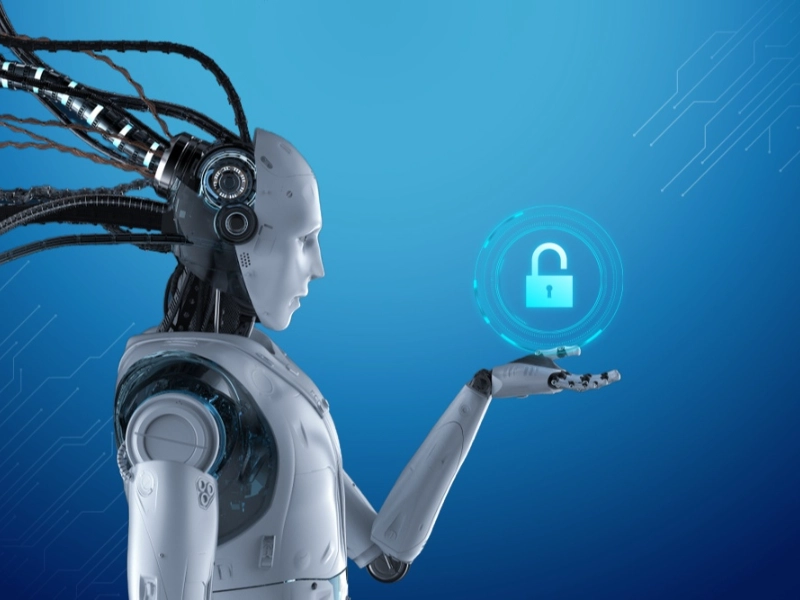The Role of Artificial Intelligence in Cybersecurity
Artificial Intelligence is rapidly becoming a necessary tool to improve the effectiveness of cybersecurity teams. It can uncover cyber dangers that human analysts might overlook, automate procedures, and assist in organizing and directing incident response actions. Artificial intelligence (AI) can evaluate enormous volumes of data in real time by scalably finding patterns and anomalies that indicate possible dangers. This makes it possible for cybersecurity systems to spot patterns and take swift action before hackers wreak harm.

Reliability
When it comes to addressing cybersecurity risks and vulnerabilities in large businesses and government settings, artificial intelligence's scale offers substantial advantages. It assists in reducing the number of resources needed for resource-intensive operations including risk analysis, complicated attack vector analysis, and massive data and network traffic monitoring. Remedial actions can be started more rapidly thanks to AI's scalability, which also enables it to handle data faster and more effectively than human analysts. This makes it possible for businesses to safeguard their digital assets more quickly, prevent monetary losses, maintain their reputation, and stay current with emerging technology developments. It is crucial to comprehend how AI operates in cybersecurity in order to optimize its efficiency. Deep learning and machine learning (ML) are two complex methods that artificial intelligence (AI) computers use to learn and analyze data. AI is now able to create a baseline of typical behavior and identify any deviations from it thanks to these technologies. Because of this, it is more difficult for hackers to take advantage of systems and do harm.
Instantaneous Analysis
Machine learning algorithms have the ability to instantly process vast volumes of data, in contrast to passive machines that work at a fixed speed or in response to preset inputs. In a small fraction of the time it would take a human, they can recognize patterns, establish connections, and formulate predictions. There are numerous applications for the technology. For example, call centers can handle client requests without having to have a face-to-face phone chat by using voice recognition and simulated human discourse. Anomalies in real-time data streams, such as suspicious activity or network disruptions, can also be detected by it. Narrow AI makes use of standard CMOS technology and fundamental algorithmic operations. It is anticipated that broader artificial intelligence would leverage novel brain-inspired hardware and architecture to process data faster than current software solutions while maintaining the energy efficiency of current systems. Artificial general intelligence, or AGI, which is capable of carrying out every task that a human can, is the ultimate aim.
Identifying
By evaluating enormous datasets including network traffic, system logs, and user activity, artificial intelligence (AI) is able to identify anomalies and signs of cyberattacks in real time. Security teams can see possible risks instantly and respond quickly thanks to this, which is far faster than human detection. AI also automates some of the laborious cybersecurity operations, such patch management and vulnerability detection. As a result, security analysts have less work to do and may concentrate on solving more complicated problems. Additionally, by lowering false positives and missed threats, AI increases the accuracy of threat detection. By doing this, companies can shorten the interval between threat identification and reaction, decreasing the window of opportunity for attackers and lowering total risk. AI is also capable of automatically initiating specified measures, such isolating compromised systems or inhibiting hostile activities, by identifying aberrant behavior. By doing away with the necessity for manual intervention, incident reaction times are further sped up and overall risk is decreased. For healthcare firms that have stringent patient privacy rules to follow, this is extremely helpful.
Reaction
AI is a useful tool for reducing the dwell period of threats within networks, which can lessen the danger of data exfiltration, system compromise, or illegal access. This is due to its real-time analysis and reaction capabilities. Through the analysis and identification of flaws in current security systems, it also aids firms in managing their vulnerabilities. By applying sophisticated analytics to examine large datasets and find trends, abnormalities, and signs of cyberthreats, artificial intelligence (AI) improves detection rates. This enables businesses to reduce expenses related to false alarms or unknown threats, optimize incident response procedures, and deploy resources more wisely. Although artificial intelligence (AI) provides increased scalability, human experience is still crucial for cybersecurity projects. This is due to the fact that cyber threats are always evolving and becoming more sophisticated, which leads to the creation of new attack vectors that are difficult for AI to identify. Humans are still necessary for confirming findings and interpreting data in order to guarantee the efficacy of cybersecurity solutions. AI and human analysts working together can be a potent team to shorten danger dwell durations and increase detection rates.








